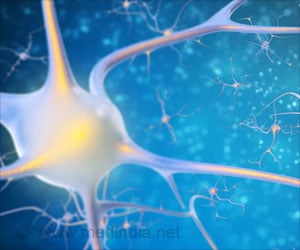
The investigation, spearheaded by Yuval Itan, a postdoctoral fellow in the St. Giles Laboratory of Human Genetics of Infectious Diseases, has led to the creation of what he calls the human gene connectome, the full set of distances, routes (the genes on the way), and degrees of separation, between any two human genes.
Itan, a computational biologist, said the computer program he developed to generate the connectome uses the same principles that GPS navigation devices use to plan a trip between two locations.
"High throughput genome sequencing technologies generate a plethora of data, which can take months to search through. We believe the human gene connectome will provide a shortcut in the search for disease-causing mutations in monogenic diseases," said Itan.
Itan and his colleagues, including researchers from the Necker Hospital for Sick Children, the Pasteur Institute in Paris, and Ben-Gurion University in Israel, designed applications for the use of the human gene connectome. They began with a gene called TLR3, which is important for resistance to herpes simplex encephalitis, a life-threatening infection from the herpes virus that can cause significant brain damage in genetically susceptible children.
Researchers in the St. Giles lab, headed by Jean-Laurent Casanova, previously showed that children with HSE have mutations in TLR3 or in genes that are closely functionally related to TLR3. In other words, these genes are located at a short biological distance from TLR3. As a result, novel herpes simplex encephalitis-causing genes are also expected to have a short biological distance from TLR3.
Advertisement
After sorting the genes by their predicted biological proximity to TLR3, Itan and his colleagues found TBK1 at the top of the list of genes in both patients. The researchers also used the TLR3 connectome - the set of all human genes sorted by their predicted distance from TLR3 - to successfully predict two other genes, EFGR and SRC, as part of the TLR3 pathway before they were experimentally validated, and applied other gene connectomes to detect Ehlers-Danlos syndrome and sensorineural hearing loss disease causing genes.
Advertisement
"This can now be performed by prioritizing any number of genes by their biological distance from genes that are already known to cause the disease," he added.
Approaches based on the human gene connectome have the potential to significantly increase the discovery of disease-causing genes for diseases that are genetically understood in some patients as well as for those that are not well studied. The human gene connectome should also progress the general field of human genetics by predicting the nature of unknown genetic mechanisms, he concluded
The research has been reported in the online early edition of the journal Proceedings of the National Academy of Sciences.
Source-ANI










